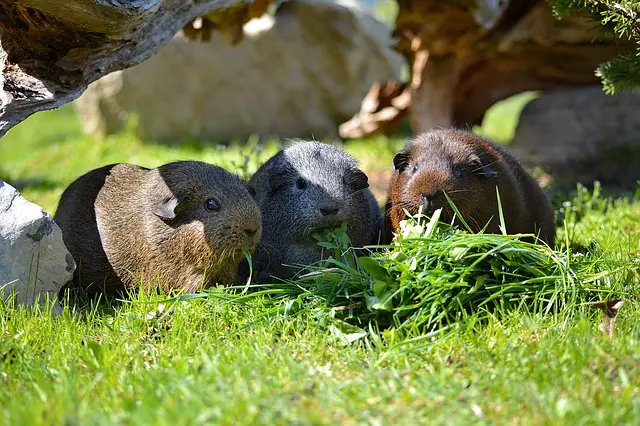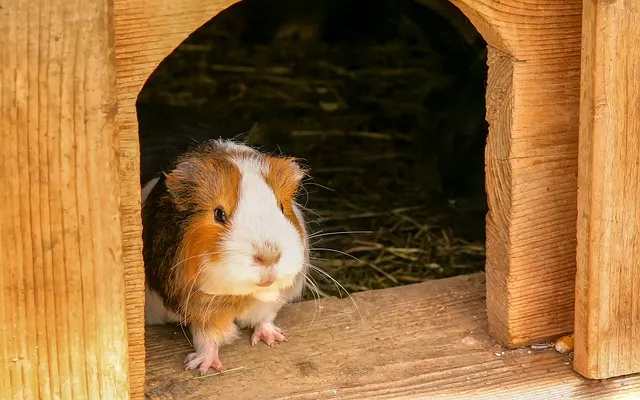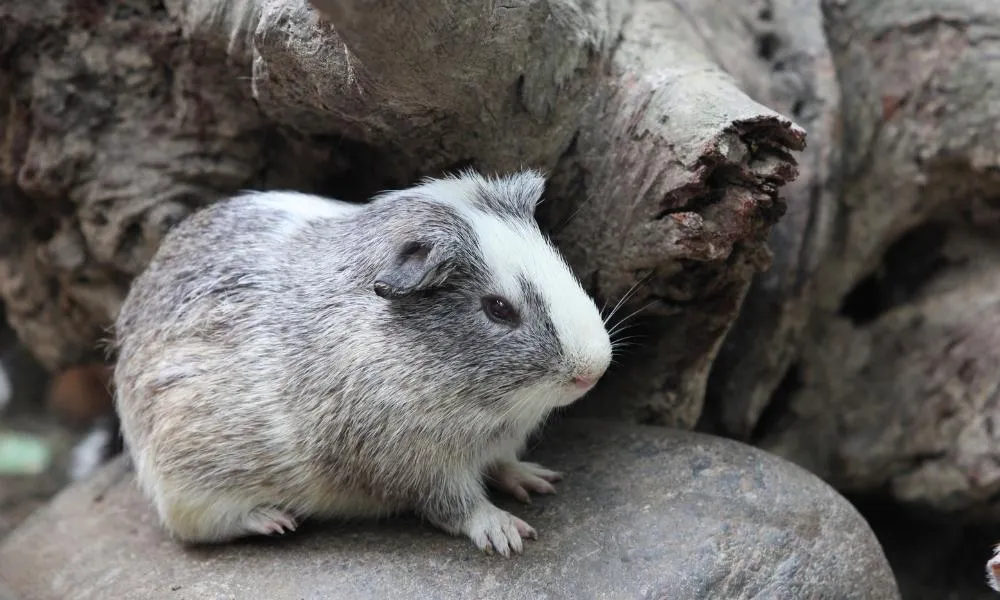Guinea pigs are still considered rodents like rats. And you know that rats can be quite troublesome at home.
Let’s just say you release your guinea pigs in the wild. Will they be considered invasive species?
Guinea pigs are a less invasive species as compared to other rodents. Though guinea pigs have a habit of chewing on grass and other stray pieces of paper, they never chew your furniture.
In fact, they are quite slow in their actions. So, before they can destroy your garden or furniture, you can easily catch and stop them from doing so.
Since they damage less, I would prefer to call them non-invasive in most cases.
Let’s see the 4 reasons why guinea pigs are not invasive species to understand better.
Table of Contents
4 Reasons Why Guinea Pigs are Less Invasive Species
As we already mentioned, guinea pigs are less invasive than other rodents. Here we have 4 reasons to call them so.
1. Guinea Pigs Are Prey Animals with Low Expectancy
It is a known fact that guinea pigs are prey animals who often get hunted by predators in the wild. So, when you leave your cavy out in the wild, they don’t survive long enough.
These are defenseless animals who don’t even see well. Hence, they often fall prey to predators like owls, kites, etc., when left in the wild.
Clearly, if cavies don’t survive for long in the wild, they can’t harm the environment. Thus, we call them less or rather not invasive.
2. Guinea Pigs Can’t Survive in Extreme Temperatures
Guinea pigs are well suited for indoor environments. When kept outdoors, they can tolerate a climate temperature between 60 to 75 degrees Fahrenheit only.
So, when you subject them to extreme climates like a highly sunny afternoon with temperatures above 75 degrees Fahrenheit, they can die of heatstroke. Similarly, your cavies won’t survive if left out in the snow.
Since guinea pigs can barely survive in the wild because of extreme weather, it is unlikely for them to damage the environment much.
3. Guinea Pigs No More Exist in the Wild

One of the biggest reasons we call our cavies less or, rather, non-invasive is the fact that you won’t find these creatures in the wild anymore.
Though guinea pigs were originally found in the wild in South America, they are now essentially domesticated animals. For more than a thousand years, this species has remained as a pet or companion to human beings.
According to the “Guinea Pig Handbook”, the trend of domesticating guinea pigs began about 3000 years ago by the Incas.
They were more than just pets then. The Incas often offered cavies as their sacrifices to their gods.
Around the end of the 16th Century, guinea pigs were taken to Europe from their natural habitat in South America by Spanish explorers. Since then, they have remained as our tiny pets.
In some parts of the world, like Peru or China, guinea pigs are also consumed as food.
Read Also: Do They Eat Guinea Pigs in Peru? (Solved and Explained)
Nowadays, guinea pigs don’t exist in the wild anymore. Hence, their invasiveness is no more a threat to the environment.
Read Also: Are Guinea Pigs Extinct in the Wild? (Explained)
4. Low Reproduction Rate in the Wild
Guinea pigs are known to reproduce about 5 litters, each of 4-8 pups, in one year.
While it might seem pretty high and damaging, the scenario changes with wild guinea pigs.
The reproduction rate of a female guinea pig depends highly on the climate, weather, food availability, and photoperiod.
To understand the effect of weather and photoperiod on the reproduction of guinea pigs in the wild, you can always read the article here.
The challenges for reproduction in the wild don’t end here for guinea pigs.
Female cavies often have problems in giving birth to their little ones. While we, as pet owners, can help them with medication, they get no medical attention in the wild.
Infant guinea pigs often die after birth in the wild.
All these factors contribute to the low reproduction rate of guinea pigs in the wild.
Can Guinea Pigs Be Released Into the Wild?

No. Based on our observations above, guinea pigs can’t be released into the wild.
If released in the wild, Guinea pigs won’t survive for long. They might harm the environment for some time, but ultimately they are less invasive to the environment.
In addition, they are prey animals. This means that they are more likely to be hunted by bigger predators.
If you’re thinking of releasing your cavies in the wild, consider taking them to a guinea pig’s shelter instead.
Final Thoughts
It’s now clear that guinea pigs are a less invasive species. Though they, like other rodents, tend to damage vegetation, they can barely survive outdoors.
Our cavies are indoor pets who can’t survive in extreme weather conditions. They don’t exist in the wild anymore but are completely domesticated for over a thousand years.
Cavies also have low reproductive rates in the wild. Since their chances of survival in the wild are less, we consider guinea pigs a less invasive species.
Share this article with other cavy lovers if you like the information here.
